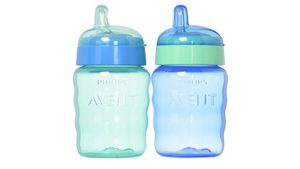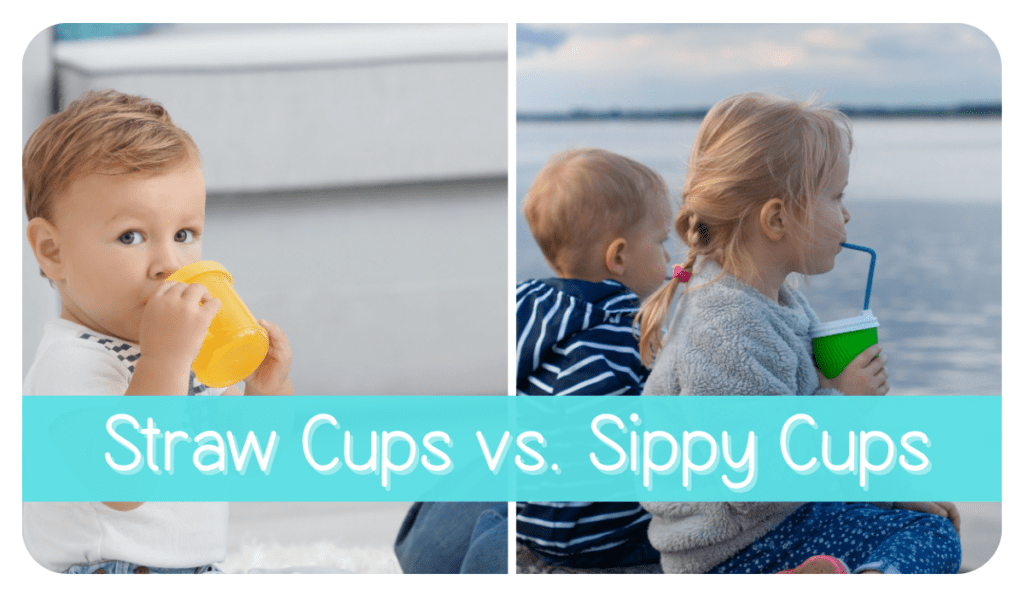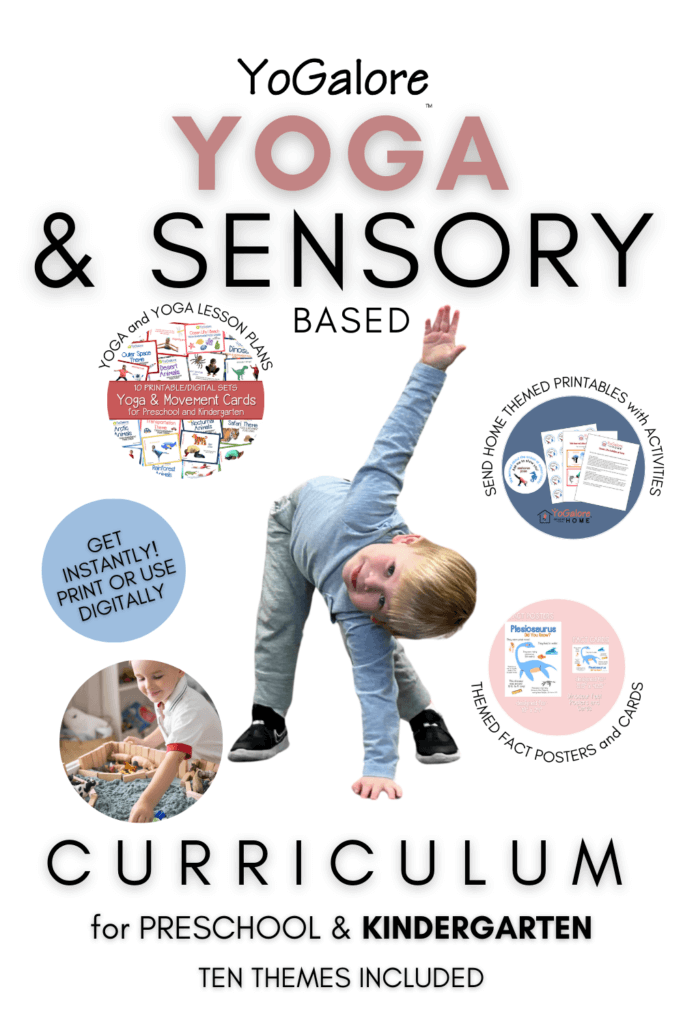Straw cups are a better choice than sippy cups for two main reasons – tooth decay and potential speech problems.
Sippy cups are good “starter cups” for little ones who are just beginning to leave the bottle behind. The cups often have handles, they are spill-proof, and usually have some sort of spout that is somewhat similar to a bottle so the child can learn to suck.
Yes, there are some good reasons why sippy cups are used. The problem with sippy cups is that parents often continue to use them much longer than they should out of convenience. Once your child has mastered the concept of sucking from a sippy cup, it’s really time to move on. Just like any other progression of skills, after one skill is mastered, another should follow. Drinking from cups is no exception.
 Sippy cups can promote tooth decay
Sippy cups can promote tooth decay
Because sippy cups are a convenience, many children often tote their sippy cups around with them all day. Having access to milk/juice all the time simply bathes your child’s teeth in sugary liquids that of course can lead to cavities. Jennifer Harr, D.M.D. says, “Children and adults alike should not constantly sip on sugary liquids including milk and juice. Bathing teeth in sugary liquids accelerates tooth decay. Sippy cups are like a bottle for older children, they promote tooth decay when filled with anything but water.”
Sippy cups can lead to speech problems/delay proper speech
Often times a sippy cup encourages children to rest their tongue on the underside of the drinking spout on a sippy cup. This is called the “tongue thrust”. “The tongue thrust …can adversely affect articulation skills,” says Amber Fleming, a pediatric speech and language pathologist. This is especially true for children who may already have special needs or receive services such as speech or occupational therapy.
According to Therapy Skill Builders, 1994, “…there are other factors that make straw drinking a good idea for many children. It helps develop and improve lip closure, strength, and control.”
Straw cups are a great alternative to an open-mouth cup (a cup with no lid) if your child still has frequent spills or isn’t quite ready for an open-mouth cup. Cups with straws allow parents to still have the convenience of a cup with a lid without the downsides the sippy cups have.
Straw cups also help to use/build important muscles, especially for children with special needs who may already have poor muscle tone and have difficulty eating and drinking.






3 Responses